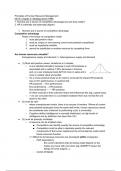Samenvatting
Summary - Principles of Human Resource Management
This document starts from the second lecture (because the first lecture was only an introduction) and contains the information from the slides with additional notes from class.
[Meer zien]



